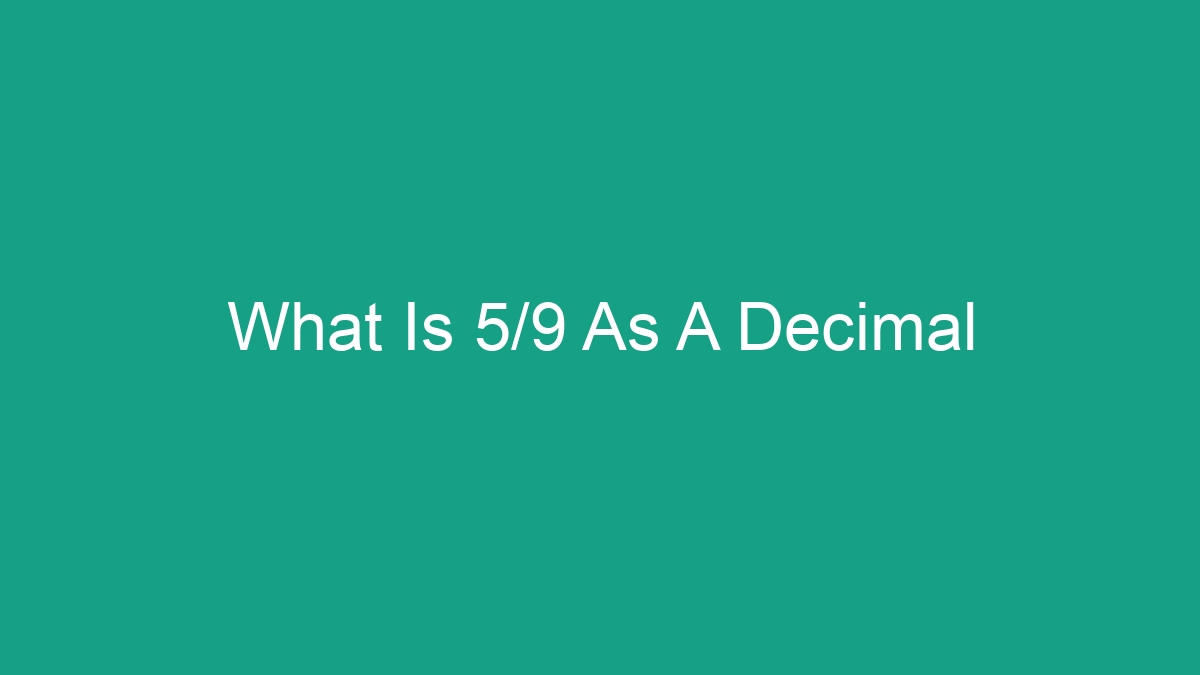
When it comes to fractions, converting them into decimals can be confusing for some. In this article, we will explore what 5/9 is as a decimal, how to convert it, and why it’s important to understand this concept. Whether you’re a student learning about fractions and decimals, or an individual needing to use this conversion in your everyday life, this article will provide you with all the information you need.
Understanding 5/9 as a Fraction
Before diving into the decimal conversion of 5/9, it’s important to have a clear understanding of what the fraction 5/9 represents. A fraction is a way of representing a part of a whole, and it consists of two numbers separated by a line – the numerator (top number) and the denominator (bottom number). In the case of 5/9:
- The 5 is the numerator, indicating the number of parts being considered.
- The 9 is the denominator, representing the total number of equal parts that make up the whole.
So, when we have the fraction 5/9, it means we are considering 5 out of 9 equal parts of a whole. This can be visualized as taking 5 out of every 9 pieces of a pie, for example.
Converting 5/9 to a Decimal
Converting a fraction like 5/9 to a decimal is a relatively simple process. To do this, we divide the numerator by the denominator. In the case of 5/9:
5 ÷ 9 = 0.555555…
So, when we convert 5/9 to a decimal, we get 0.555555…, with the 5 repeating infinitely. This is also commonly represented as 0.5 with a line over the 5, indicating that it repeats indefinitely.
The Importance of Understanding Decimal Equivalents
Understanding the decimal equivalents of fractions is important for several reasons:
- Real-World Applications: Many real-world measurements and calculations are presented in decimal form, so understanding how to convert fractions to decimals is crucial for practical purposes.
- Comparison and Ordering: When comparing or ordering fractions, having their decimal equivalents allows for easier and more accurate comparisons.
- Mathematical Operations: Converting fractions to decimals makes it easier to perform operations such as addition, subtraction, multiplication, and division.
Frequently Asked Questions
Q: Why does the decimal for 5/9 repeat?
A: The repeating decimal for 5/9 is a result of the division process. When we divide 5 by 9, the result is 0.555555…, with the 5 repeating indefinitely. This happens because 9 doesn’t evenly divide into 5, resulting in a non-terminating decimal.
Q: How can I write the repeating decimal as a fraction?
A: The repeating decimal 0.5555… can be expressed as a fraction using the bar notation. In this case, 0.5555… can be written as 5/9, where the 5 is repeated infinitely.
Q: What are some common fractions and their decimal equivalents?
A: Some common fractions and their decimal equivalents include:
- 1/2 = 0.5
- 1/4 = 0.25
- 3/4 = 0.75
- 1/3 = 0.3333…
- 2/3 = 0.6666…
By understanding how to convert fractions to decimals, you can handle mathematical problems more effectively and have a deeper comprehension of the relationships between different types of numbers. Remember that the process of conversion is straightforward, and with practice, you’ll become more comfortable with it.




